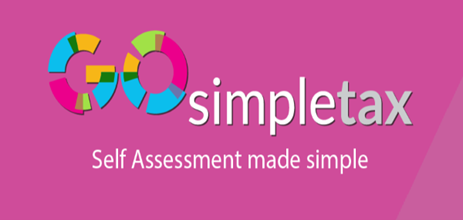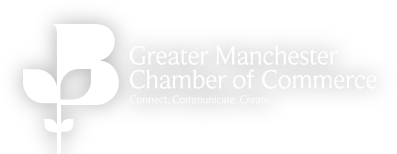
The weeks leading up to Christmas bring a welcome sales boost to many British businesses, including a large proportion of the UK’s 3.1m sole traders. And although business owners will get a lot of extra festive cheer from selling more and increasing their annual sales revenue, it can bring additional tax-reporting responsibilities, which some sole traders need to be aware of.
If additional Christmas sales do push your annual side-hustle sales income over the trading allowance threshold, what does it actually mean for you?
What is the trading allowance?
The trading allowance is a tax exemption that enables people to earn up to £1,000 a year in trading income from self-employment (eg selling products or services online or offline), casual work (eg gardening, babysitting, decorating, dog walking, etc) or hiring out personal equipment (eg power tools).
If your annual gross income (ie the total amount of money you earn before taxes and deductions) from self-employment, casual work or hiring things out is £1,000 or less, you don’t need to tell HMRC.
That may have been the case for you so far, but if strong sales in the run-up to Christmas pushes your trading income over the £1,000 trading allowance threshold, you need to let UK tax authority HMRC know, which means having to register for Self Assessment.
Registering for Self Assessment
Self Assessment is the system that HMRC uses to collect Income Tax from sole traders, freelancers, members of business partnerships, small private landlords, etc.
If you’ve registered for Self Assessment before, you don’t need to register again, you simply need to reactivate your Self Assessment account by signing in via government website GOV.UK to access HMRC’s online services. You’ll need your Government Gateway user ID and password (GOV.UK explains what to do if you've lost your Government Gateway user ID and password).
Need to know! You must register for Self Assessment before 5 October following the end of the tax year during which you earned taxable income. The UK tax year is 6 April until the following 5 April. Register as soon as possible, because then you’ll have plenty of time to complete and file your Self Assessment tax return before the online-filing deadline (midnight on the 31 January). There’s an immediate automatic £100 fine for missing the online-filing deadline.
When you register as a sole trader, you’ll be registered for both Self Assessment and National Insurance contributions (NICs). Class 4 NICs are payable once your total profits reach £12,570 a year. For the 2024/25 tax year, Class 4 NICs are 6% on profits between £12,570 and £50,270, then 2% thereafter.
What happens after you register for Self Assessment?
After you register, you’ll get your Unique Taxpayer Reference (UTR) through the post within 15 working days (21 days if you live outside of the UK). You’ll get your UTR sooner if you use the HMRC app. Your UTR is a unique ten-digit code that enables HMRC to identify you as a taxpayer.
As stated previously, once registered, each year you must submit a Self Assessment tax return, summarising your taxable income from all sources, as well as any tax expenses, reliefs and allowance you want to claim.
Need to know! As a registered sole trader, by law you must maintain accurate, up-to-date financial records, detailing your sole trader sales and expenses. Most people use bookkeeping software. These records enable you to accurately complete your Self Assessment tax return.
How much tax will you pay?
You don’t pay tax on your first £12,570 of your total income, because this is your tax-free Personal Allowance.
Thereafter, Income Tax can be payable on your sole trader “net profits”, which is your total sole trader sales minus any tax expenses that you wish to claim. HMRC must deem these “allowable” (here are 45 expenses that HMRC does allow). You may also be able to claim other tax allowances that further reduce your tax bill.
Your sole trader tax bill will be determined by the Income Tax band into which your total taxable net income falls. This is net income from all taxable sources, not just your sole trader profits. Your total taxable net income can include income from a full-time or part-time job (although you will have already paid tax on this), share dividend payments, savings interest, pension payments, renting out property or land, etc.
- You’ll pay the basic rate of Income Tax (20%) if your total taxable income is between £12,571 and £50,270.
- You’ll pay the higher rate of Income Tax (40%) if your total taxable income is between £50,271and £125,140.
- You’ll pay the additional rate of Income Tax (45%) if your total taxable income is more than £125,140.
*2024/25 for all figures, England, Wales and Northern Ireland. Income Tax bands and rates are different in Scotland.
Tax returns made quicker and simpler
Even if you have to register for Self Assessment following a bumper Christmas season, if you’re selling on a relatively small scale, your tax bill may be relatively small. If your net taxable income is below the Personal Allowance, you’ll pay nothing. To minimise your tax bill, be sure to claim all of your tax expenses. Recording them all as and when you pay them can be the best way to ensure that you don’t forget to claim any.
Having to complete a Self Assessment tax return every year could well be a new additional faff that you would rather do without, but using good Self Assessment tax return-filing software can make this much simpler, quicker and far less painful. It can cost as little as a fiver a month, which usually proves to be money well spent.
About GoSimpleTax
Self Assessment Tax Return Made Simple.
You don’t need to be an expert to complete your Self Assessment tax return, get started with GoSimpleTax today, it’s free to try.
Our software submits directly to HMRC and is the digital solution for the Self-Employed, Freelancers, Sole Traders and anyone with income outside of PAYE. The software will provide you with hints and tips that could save you money on allowances and expenses you may have missed.
Get started with GoSimpleTax today, it's free to try.

